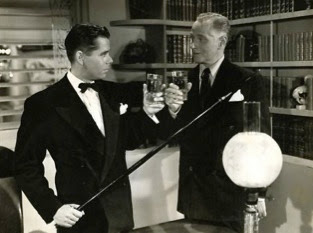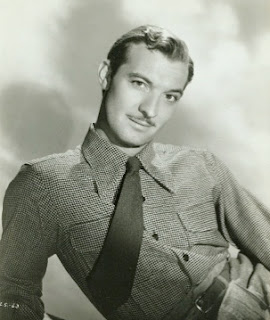In the quiet of night, a man awakes. The walls of his dull cell closing in on him. Faced with a sense of dread since daylight is still hours away, he plots his escape. Resist the darkness! he shouts to no one. You are alone! The future, a mirage, hidden by hurdles so high they cause vertigo. Get over it. The wall, that is. Take flight!
So what does he do, this man locked up in solitude, condemned to death? He pops a DVD into the television and vanishes into another man’s dream. This time, it’s Robert Bresson’s astonishing film Un condamné à mort s’est échappé (A Man Escaped), the perfect antidote to self-pity.
Bresson’s extraordinary legacy is relatively new to me. Somehow in my film classes in college, we skipped over his contributions to cinema. Perhaps the department was too wrapped up in Truffaut and the nouvelle vague, and its world of ennui. (Truffaut, typically, characterized A Man Escaped as a movie about a man battling boredom.) Like Jules Dassin, whose film noir fantasies deserve to be better known, Bresson’s vision and artistry dazzle as much as they delight. Spare, luminous, breathtakingly honest, his films speak volumes, without almost saying a word.
In A Man Escaped, the word is all. It is the mechanism of hope. For the Christ-like prisoner, bloodied and beaten, wears handcuffs that stifle his ability to express himself. Later, after removing his handcuffs with a safety pin, he shows his defiance, in fact, the spirit of the Resistance, by refusing to turn over his pencil. His writing utensil is his weapon, and means of escape. He counts the knocks of his condemned neighbors, who tap on the thick concrete walls to which he presses his ear. He marks their messages, as he counts the days, by scratching, leaving jagged, seemingly meaningless scrawls on the surface. He is like the Cro-Magnon artist at Lascaux, leaving cave-dwelling representations of life outside. The prisoner, Fontaine (the name is itself literary, as in the legendary storyteller Jean de la Fontaine, and implies a flowing pen) then expresses himself in meticulously written notes passed along by his confreres, willing to risk their lives to get the word out. Writing is everything in this scripted dreamscape.
In fact, Bresson opens his film with a handwritten message saying that the story we are about to see is true, “unadorned.” But we know that is not the case. Film is a lie. Art can never express reality. It must prevaricate, twist, and reshape, fine tune, to make a point, like the graphite at the tip of the pencil. It is the essence of propaganda. And yet, by holding back, trapping us like prisoners ourselves, imposing his pacing, his style, his vision, Bresson achieves the perfect lie. He makes us believe in something which is intrinsically false, deviously surreal. A fable.
Bresson’s mastery of cinematic techniques was not entirely new to me. I’d seen Pickpocket (1959), and was swept away by its ingenious visual legerdemain. It’s a confidence trick par excellence. So it was no surprise, when I finally encountered his earlier masterpiece, A Man Escaped (1956), that I was left reeling by Bresson’s level-headed, painstaking artistry. But what did surprise me was an indisputable realization, a kind of revelation, one that confirmed what I had felt about Pickpocket, but was too circumspect to fully believe: a subtle, between-the-lines homoeroticism at the core of Bresson’s work.
 |
| Director Robert Bresson |
Watching Pickpocket, I was amazed by the similarity between the act of stealing and that of cruising. For both entail a mindset of hunting for prey: stalking, plotting, and circling one’s victim, culminating in the act itself, a violation, which is breathtakingly intimate, yet brutally anonymous, and over in a flash. Bresson captured this exotic, hyper-masculine underworld in the haunted expression of the thief’s eyes, the furtiveness of his hand movements, the ruthlessness of his stalking, and that of his cohorts. It is a subterranean set, a secret fraternity of mischief and mendacity.
 |
| Intense focus: from Pickpocket |
This unspoken language is also at the heart of A Man Escaped. For what begins as a simple prison film, of a single man’s plot to escape, suddenly takes a dramatic turn halfway through when a young man, a changeling, is dropped into his lap, so to speak. The boy, a satyr-like waif, Francois Jost, is an enigma. Half Resistance fighter, half German turncoat, he embodies the duality of Vichy France. A mere 16, he is filthy, disheveled, and infested with lice, but not enough to be undesirable. Bresson cleverly cast a handsome young man, Charles le Clainche, without any acting experience, whose vacant, yearning glances suck you in. It’s a child’s face, but also a punk’s mask. Could he be a spy? A plant? Or is he like Parsifal, the “naive fool”? Could he be the condemned man’s soul mate, his brother in arms, who helps him find the Holy Grail?
We are left wondering, just as the prisoner too wrestles with his dilemma. Should he trust this mysterious stranger with his deep, dark secret? Ironically, it is because of the urchin’s lack of artifice that he is embraced, and accepted. Jost admits to having just a few lice, which surely a Nazi spy would never do. A liar would never be so fair, so lacking in guile. He’d be all or nothing, not ingenuous. Jost’s naivete is Fontaine’s ticket to freedom. And vice-versa. The boy is propositioned. Will you come with me? Or must I kill you? The youth chooses life.
A partnership is signed, not with a pen, but with a regard, a nod, a supreme gesture of submission: “Yes.” From there, the pace picks up. The static quality of the first half of the film is replaced by a state of ramped-up drama, of action. The rope, made out of sheared bed linens and clothes, serves as a tightrope, and ultimately as a lifeline.
But first, the man who seeks life must kill. The German guard is slain, off-screen, the only clue to his fate, a faint, garbled sigh as the soldier is stabbed to death with his own bayonet and slumps to the ground. Having killed for freedom, Fontaine turns to his partner, and helps him down the rope. The boy leaves his shoes and coat at the prison, half in and half out, braving this new frontier without protection. There is no holding back now. The couple climbs down the final wall to the ground below.
And then the moment of climax. “Jost!” the man exclaims, clutching the boy to his side, pulling him tight in a spontaneous embrace, their bodies so close it’s almost a kiss. Savoring his triumph, the man does not fall to the ground, or cry out “Free At Last,” or “Vive La France,” or even “Thank God!” His only sound is the name of the boy he has rescued. The man he loves. "Jost!"
For this is not just a film about war and the inhumanity of man — it’s a film about loneliness. And the quest for love. Jost’s awkward ragamuffin is not only Fontaine’s partner in crime, but his savior. They walk off together, not into the sunset, but towards a new dawn.

















































